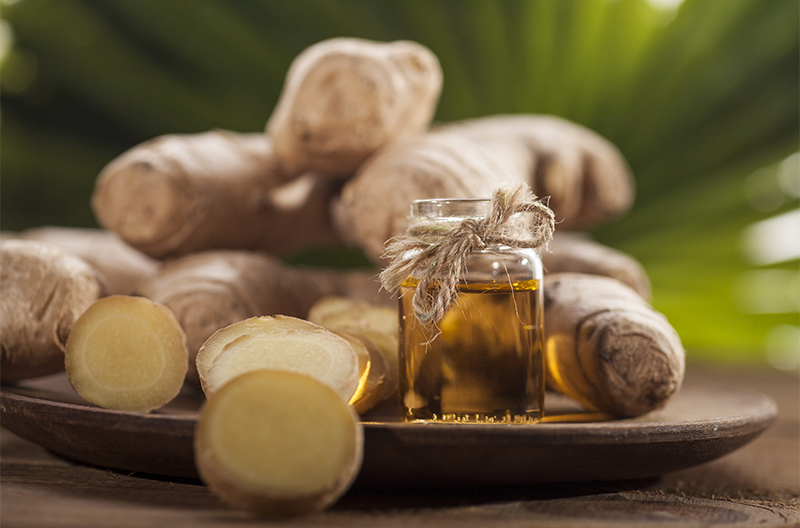Ginger essential oil is a strong-smelling oil that is a great addition to your oil collection. You may already use ginger root in homemade tea to calm upset stomachs, or even in cooking to add a spicy-sweet undertone. Now you can use this wonder root in your essential oil routine too, amping up its benefits and aroma by using it in one or more fragrant essential oil blends we highlight below.
We’ll go over the smell of ginger oil, what ginger essential oil blends well with, and some added benefits of using these blends in your life.
Fragrance Profile of Ginger Essential Oil
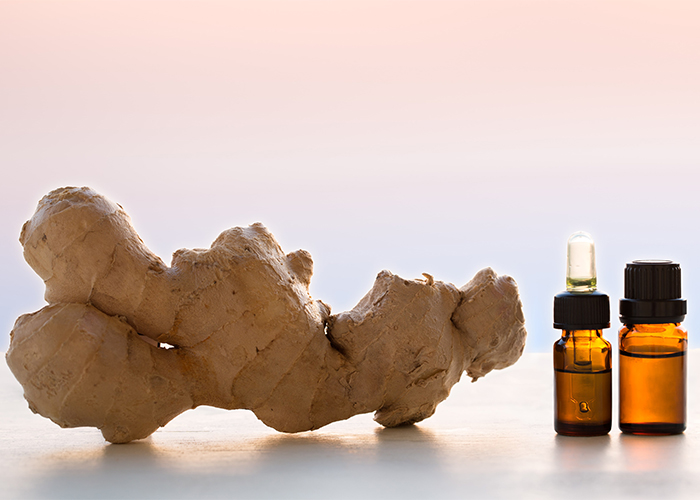
Ginger essential oil will wake up your senses. It has a strong spicy and warm smell, with some woodsy tones too. This oil is formed via steam distilled from dried ginger roots and, therefore, has remarkably earthy scents in its aroma as well.
The holiday season provides some fantastic opportunities to use ginger essential oil blends because some of the smells ginger essential oil blends well with are known as classic holiday scents, such as frankincense and peppermint.
Next up, let’s take a look at what blends well with ginger essential oil so you can try a blend for yourself!
Important: Ginger essential oil is a dermal irritant. Meaning, when you use this oil topically, you should dilute it at a higher rate than normal. Try adding two drops of ginger essential oil per 30ml of carrier oil to safely use this oil on your skin.
What Ginger Essential Oil Blends Well With
1. Citrus essential oils

Many of the oils ginger essential oil blends well with are citrus oils. The best citrus fragrances ginger essential oil blends well with are orange, lemon, and lime. The sweet, tangy smells of the citrus blends complement the sharper earthier ginger tones.
Try using ginger essential oil and citrus essential oils for your skin. Citrus and ginger essential oils are both high in antioxidants.[1]’[2] These oils can be great to use before bed if you need to give your skin an extra boost.
2. Clove essential oil
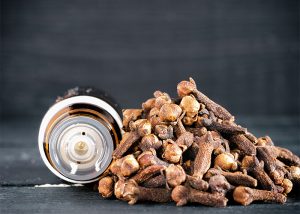
Clove is a sweet and spicy oil that smells similarly to its herb counterpart. Using the powerful notes of clove and ginger together make for a spicy, warm blend that’s perfect for diffusing on cold nights. Both oils contain eugenol, which can increase blood circulation in your body.[3]’[4]
Given this is one of the best smells ginger essential oil blends well, it’s worth looking into adding this blend to your collection.
3. Eucalyptus essential oil

Ginger essential oil blends well with eucalyptus because they both have very fresh, potent aromas. However, eucalyptus essential oil is cooling while ginger is warming, creating a contrast that’s really amazing for your senses.
You can use this anti-inflammation blend on your skin to help ease cough and cold symptoms.[5]’[6]
4. Frankincense essential oil

Frankincense essential oil is a versatile oil that has a similar aroma to ginger. In short, they’re both spicy, warm, and woodsy, with frankincense having an additional sweet side. You can use these two oils together to support your digestive health.
Frankincense oil is anti-inflammatory and contains specific enzymes that are particularly great for reducing inflammation for those who suffer from IBD (Inflammatory bowel disease).[7] Also, ginger essential oil can help with stomach queasiness when inhaled.[8]’[9]
5. Peppermint essential oil
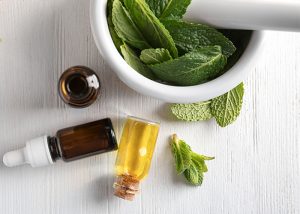
Using a blend of peppermint and ginger essential oils will pack a punch. Peppermint is cool and, well, very minty. Meanwhile, ginger is warm and woodsy. Ginger essential oil blends well with peppermint for health benefits too. The two oils together can produce a warming and cooling sensation when used on sore or painful muscles.[10]’[11]
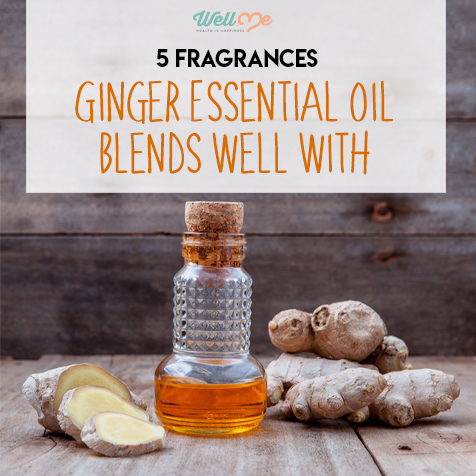
References
- [1] https://pdfs.semanticscholar.org/0656/a638abdfa284b83455b83d11f953d648dad5.pdf
- [2] https://pubs.acs.org/doi/abs/10.1021/jf000227d
- [3] https://pdfs.semanticscholar.org/0656/a638abdfa284b83455b83d11f953d648dad5.pdf
- [4] https://journals.sagepub.com/doi/abs/10.1177/00220345710500062801
- [5] https://www.ncbi.nlm.nih.gov/pmc/articles/PMC2967840/
- [6] https://www.ncbi.nlm.nih.gov/books/NBK92775/
- [7] https://www.ncbi.nlm.nih.gov/pmc/articles/PMC3924999/
- [8] https://www.ncbi.nlm.nih.gov/pubmed/17764013
- [9] https://www.ncbi.nlm.nih.gov/books/NBK92775/
- [10] https://www.sciencedirect.com/science/article/pii/S0965229913001714?via%3Dihub
- [11] https://www.sciencedirect.com/science/article/pii/S2221169115001033?via%3Dihub

